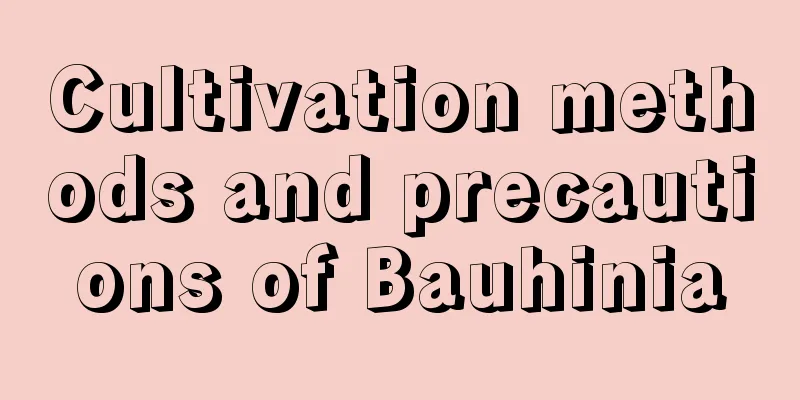Cultivation methods and precautions of Bauhinia

Cultivation method of BauhiniailluminationBauhinia likes light by nature, so in addition to avoiding exposure to the scorching sun in summer, sufficient light must be ensured in other seasons. It should be grown in a place where it can absorb scattered light to ensure the normal growth of Bauhinia. soilBauhinia is not very demanding on soil, but grows best in fertile, well-drained soil. WateringBauhinia likes a humid environment, but cannot tolerate flooding. Water should be applied immediately after planting, again on the third day, and again after the sixth day. After three times, water should be applied according to weather conditions. It is best to keep the soil moist, but waterlogging should be avoided. FertilizationBauhinia likes fertilizer. When there is sufficient fertilizer, it grows vigorously, with luxuriant branches and leaves, and many colorful flowers. When there is a lack of fertilizer, the branches and leaves will be sparse, and the flowers will be few and pale in color. Therefore, before cultivating Bauhinia, sufficient base fertilizer should be applied. It is best to use leaf mold, manure or dried chicken manure. Things to note when growing BauhiniaWater more in summerThe temperature is too high in summer and water evaporates too quickly, so it is necessary to replenish water for the Bauhinia in time. You can spray the leaves or the surrounding environment with water frequently to maintain the air humidity. Prevent water accumulationBauhinia prefers a humid environment, but cannot grow in a waterlogged state, so it is necessary to drain the water in time after the rain to avoid excessive waterlogging that will cause root rot and affect the normal growth of Bauhinia. Timely pruningBauhinia should be pruned frequently from the seedling stage to help form a good plant shape. After transplanting, the seedlings can be pruned to encourage more branches, expand the nutritional area, accumulate nutrients, and develop the root system. Pinch off the top during the growing season, remove the multiple suckers in time after planting, and strengthen the renewal of flowering branches. |
>>: When does yellow rose bloom?
Recommend
Chrysanthemum cutting method and precautions How to make chrysanthemum cuttings have a high survival rate
Chrysanthemums are best propagated from cuttings ...
How to plant blueberry seedlings
1. Planting seedlings Generally, planting is chos...
Can Dendrobium be grown indoors?
Can Dendrobium be grown indoors? Dendrobium can b...
What are the cultivation methods and precautions of peacock arrowroot
Peacock arrowroot cultivation method Peacock arro...
Cutting propagation methods and precautions for Chlorophytum
Chlorophytum comosum propagation method Chlorophy...
The easiest way to make your own flower fertilizer
Flowers definitely need to be fertilized during t...
Breeding methods and precautions for blue butterflies
1. Soil The soil requirements for breeding are go...
Introduction to Moneywort, Can Moneywort Be Eaten?
1. Family There are many aliases for Moneywort, s...
How to Identify Black and Purple Sunflowers
1. Leaves The leaves of the black purple sunflowe...
How to repot the Kalanchoe? What to do if it wilts after repotting?
1. Steps for changing pots 1. Time: The time for ...
Cultivation methods and precautions of Shilixiang
Osmanthus fragrans is an ornamental plant that is...
How often should potted roses be watered?
How often should potted roses be watered? Rose is...
How to make Calla Lily bloom more
1. Suitable soil and fertilizer It should be plan...
Where to grow blueberries?
Blueberry growing area Generally, blueberries gro...
The efficacy and function of February orchid
effect Ornamental value Perhaps everyone’s deepes...









